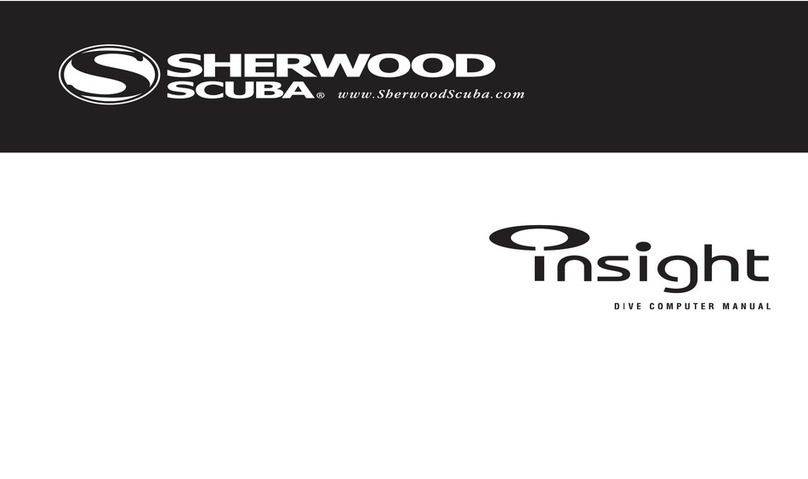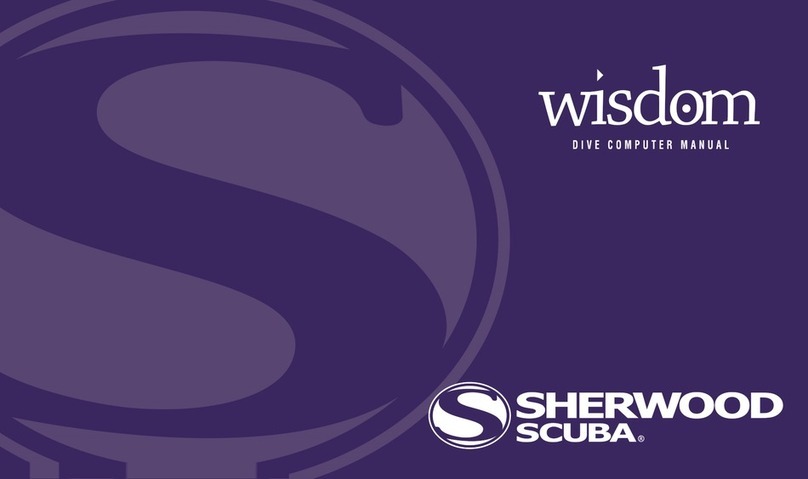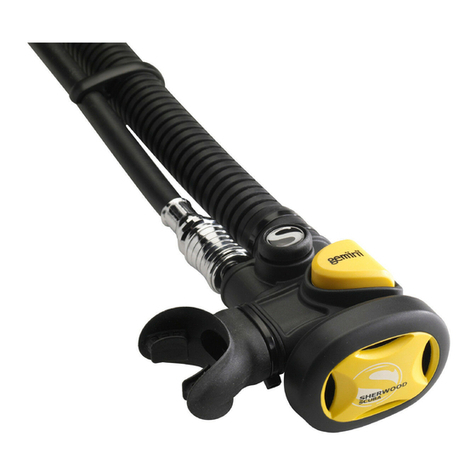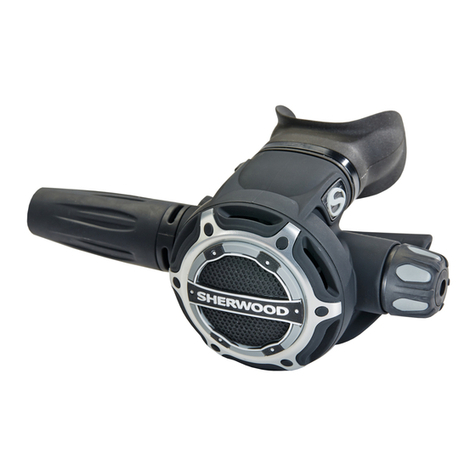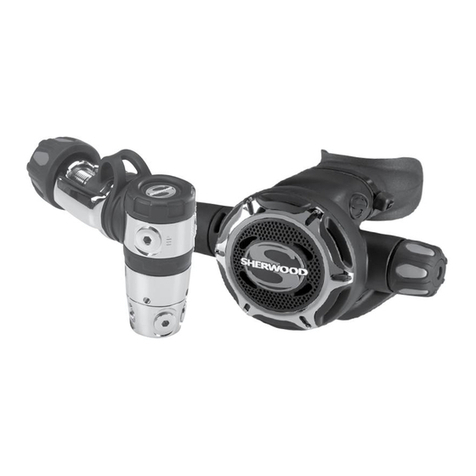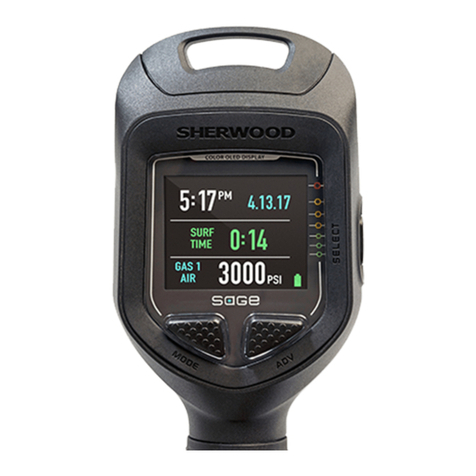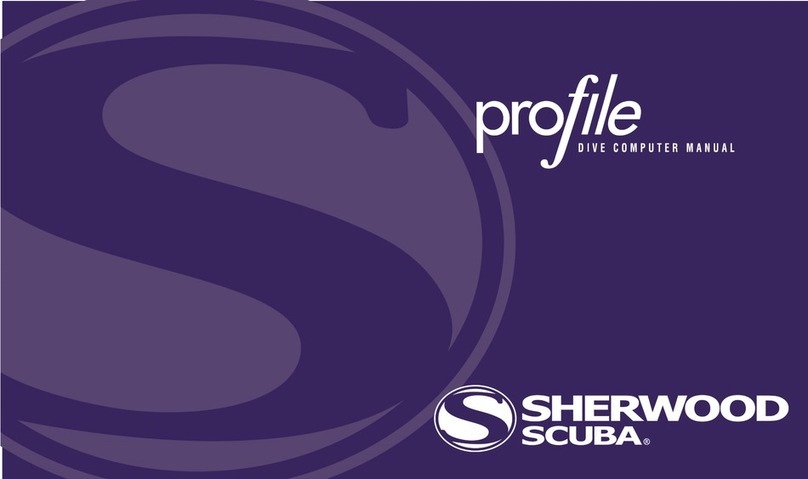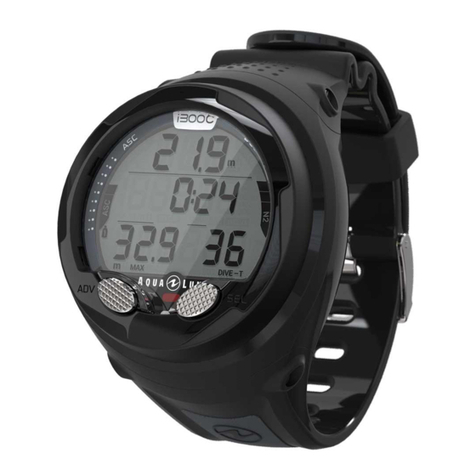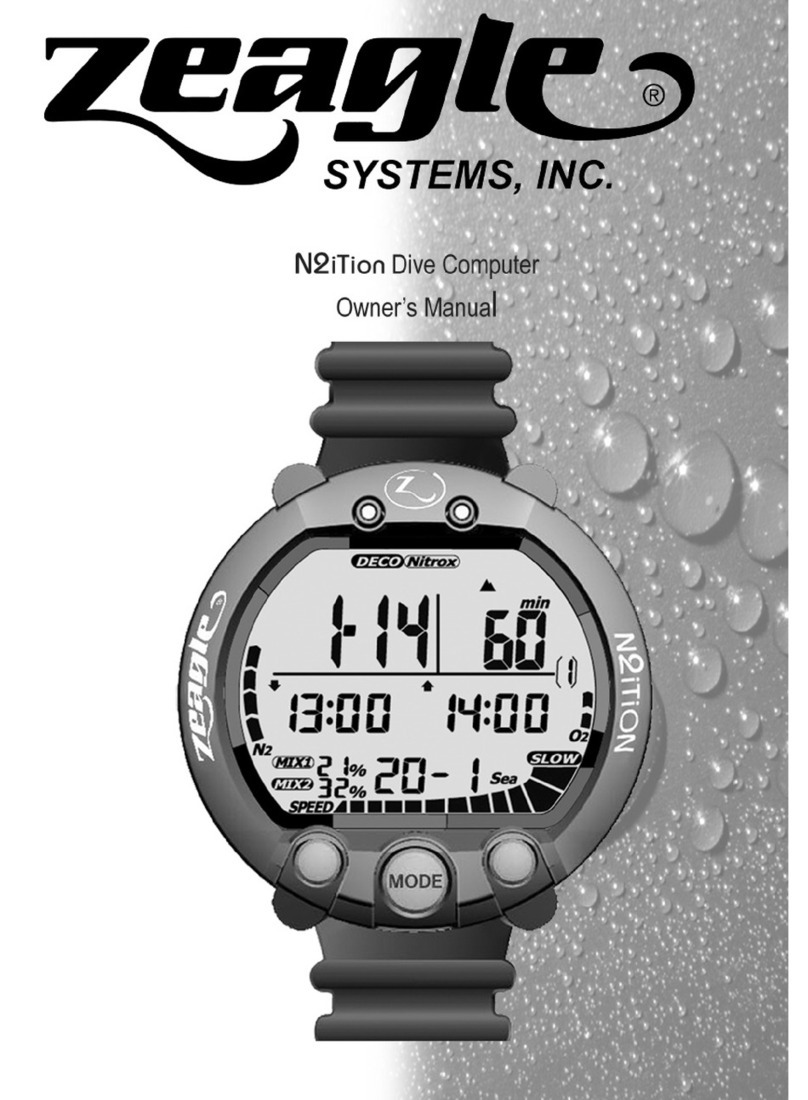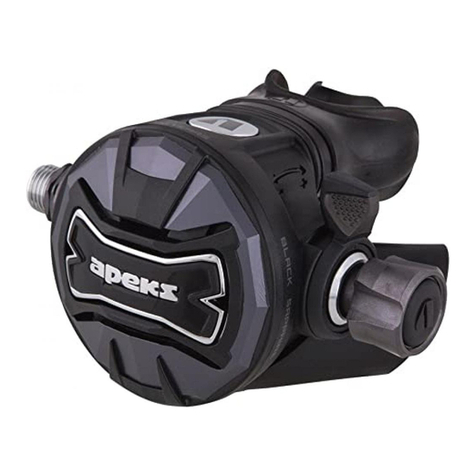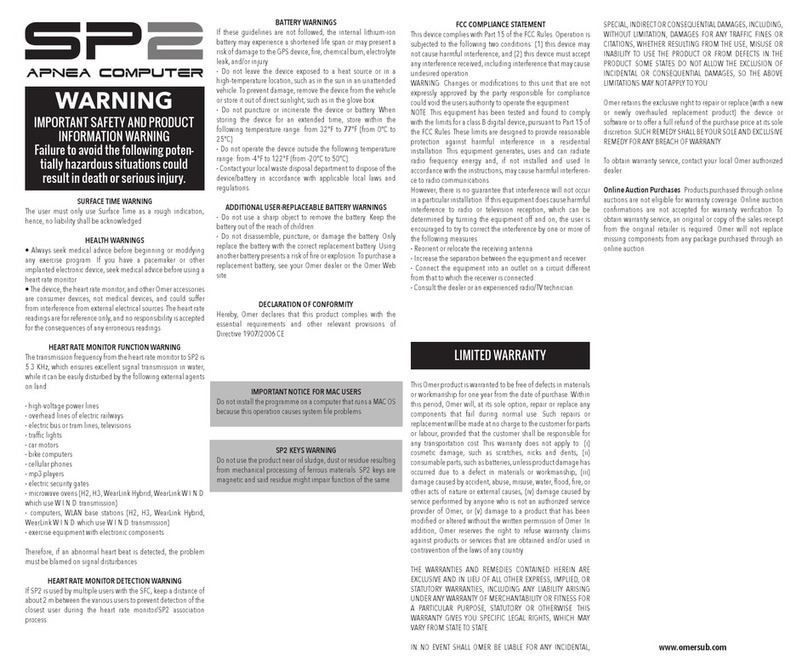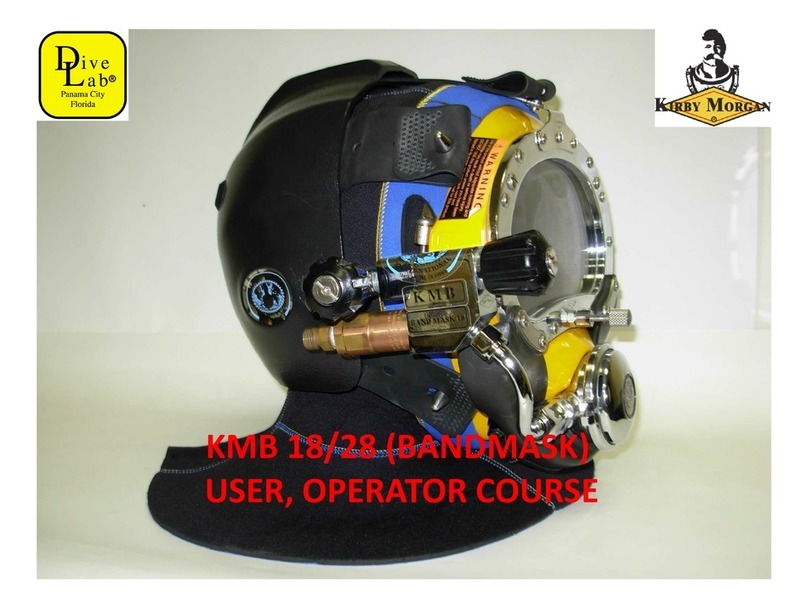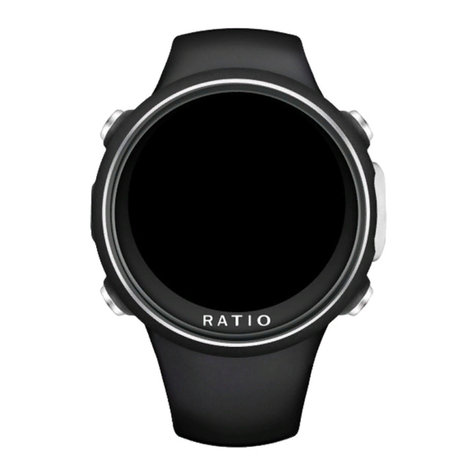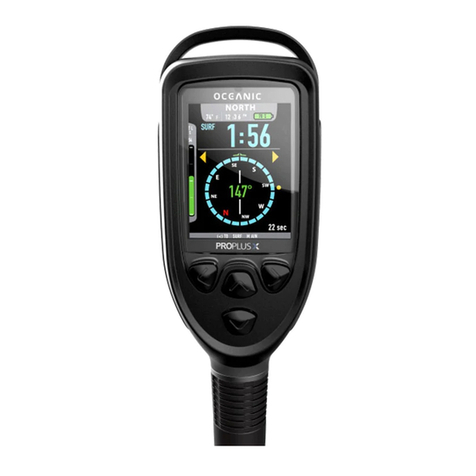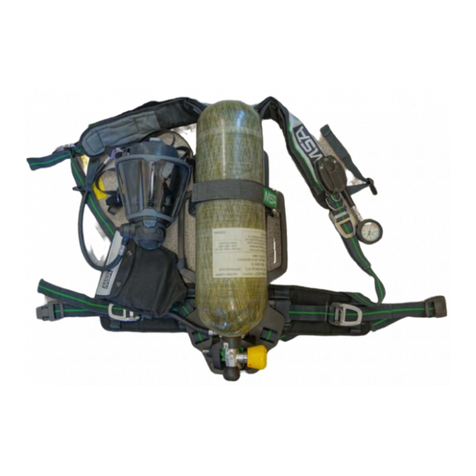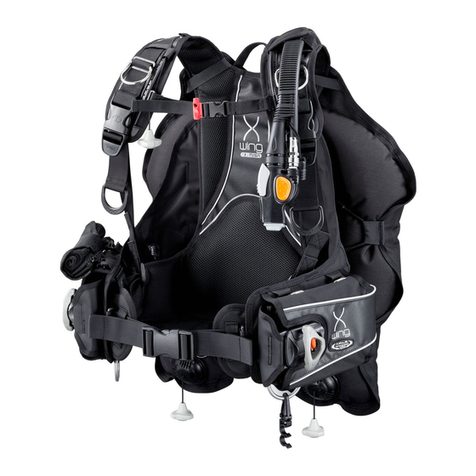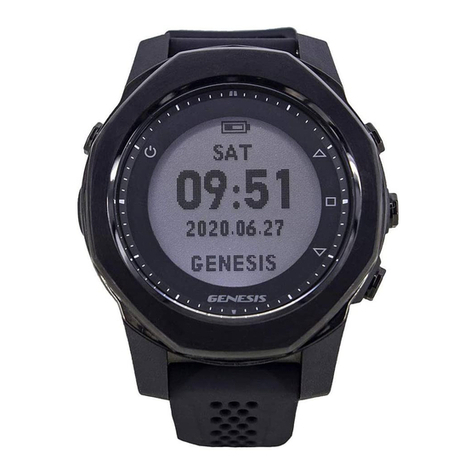
www.sherwoodscuba.com
3
ANNUAL INSPECTION GUIDELINES
1. Visually inspect the first and second stage for signs of damage or deterioration. Mouthpieces with tears or other
damage should be replaced.
2. Retract hose protectors and inspect the hose over its entire length for signs of damage including blisters, deep
cuts or separation at the crimped fittings. If these signs are present the hose must be replaced and standard
service overhaul is recommended.
3. Insert a soft probe through the exit port of the exhaust cover and lift the Exhaust Valve to inspect it for cuts, tears
or contaminated surfaces. Perform this examination from both sides of the Exhaust Cover to observe the entire
perimeter of the Exhaust Valve. If damage to the Exhaust Valve is found a complete overhaul is recommended.
If the Exhaust Valve or the sealing surfaces on the Housing are contaminated with debris, the Exhaust Cover
must be removed and the surfaces must be cleaned. Instructions for removing and replacing the Exhaust Cover
appear in the Second Stage Service Guide. As a final check of the Exhaust Valve apply a moderate suction
(approximately minus 5 inches of water, moderate inhalation effort) to the second stage mouthpiece with the air
supply closed and the second stage purged. If leakage is detected a complete overhaul is recommended.
4. Inspect the first stage filter for evidence of contamination. Discolored filters indicate previous contact with
contaminated air. If evidence of contamination is present it is recommended that a standard service overhaul be
performed. In addition you should advise the customer that the regulator has been exposed to contamination
and that previously used air cylinders used should be inspected.
5. Install an intermediate pressure gauge into one of the available LP ports.
6. Pressurize the regulator to approximately 500 psi and inspect for leakage. Note intermediate pressure. It
should not be greater than 150 psi. If no leakage is detected increase inlet pressure to 3000 psi. Again check
intermediate pressure. It should not exceed 150 psi. If intermediate pressure is out of range 145 +/- 10 psi
or leakage is present a standard service overhaul is recommended.
7. Test the purge function. If there is not a strong surge of air, a standard overhaul is recommended.
8. Gently submerge the entire regulator and look for bubbles that indicate leakage. If leakage is present a standard
service overhaul is recommended.
9. If a test bench is available perform an inhalation test. Inhalation effort should not be greater than 2.0 inches
of water at opening and less than 5.0 inches of water at 15 SCFM. If a test bench is not available perform a
subjective breathing test. When properly adjusted the regulator should provide smooth and easy inhalation. If
difficulty with inhalation is suspected a standard overhaul is recommended.
Sherwood regulators are designed and tested to perform acceptably under typical recreational diving conditions up
to 300 hours of use.
If the regulator has been subjected to more than 300 hours of use or it has not received the benefit of careful
post-dive cleaning and storage in a clean environment, a standard service overhaul is required.
In any case the Sherwood regulator described in this manual should receive a standard service overhaul at
least every two years to maintain optimal performance. The standard service overhaul includes disassembly,
cleaning, inspection, replacement of seals, lubrication, reassembly and adjustments.
Regulators that are used in extreme conditions, such as commercial use or rentals require more frequent service over-
hauls of at least every 3 to 6 months.
Sherwood Scuba offers a standard service kit that contains the parts recommended to be replaced in connection
with the standard service overhaul.

